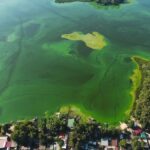Lake Superior’s chocolate color
I’m guessing it’s all the mud from the Wisconsin rivers that is causing our lake to turn a deep shade of brown. I’ve watched it slowly ooze its way across the lake all day. All that sediment can’t be good for anything. I wonder how common an occurrence this is to have this much water coming down rivers this time of year.
Recommended Links:
Leave a Comment
Only registered members can post a comment , Login / Register Here














19 Comments
francenestarr
about 13 years agoChris
about 13 years agoWes Scott
about 13 years agoRightElbow
about 13 years agoTom
about 13 years agowildknits
about 13 years agoarockwell
about 13 years agoCarla
about 13 years agomatilda
about 13 years agoWes Scott
about 13 years agoBoB
about 13 years agojohnm
about 13 years agoVicarious
about 13 years agoBarrett Chase
about 13 years agovicarious
about 13 years ago-Berv
about 13 years agoEvilJeffy
about 13 years agoJesse
about 13 years agobluenewt
about 13 years ago